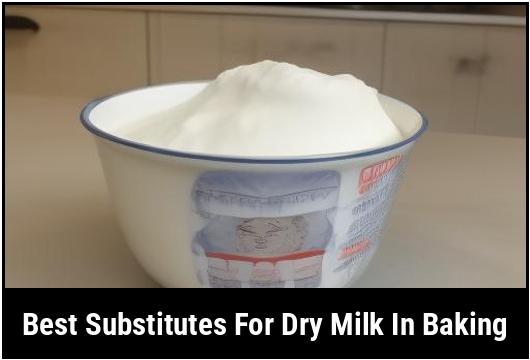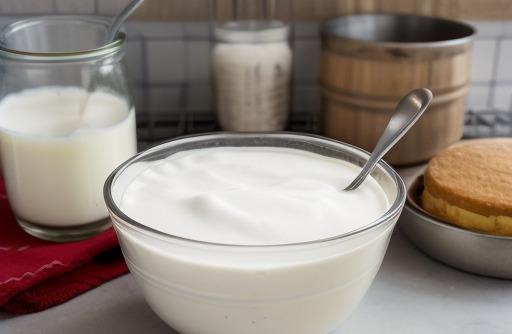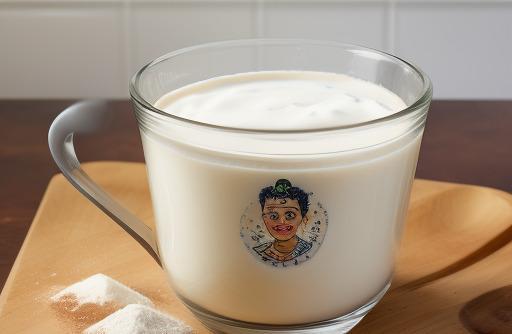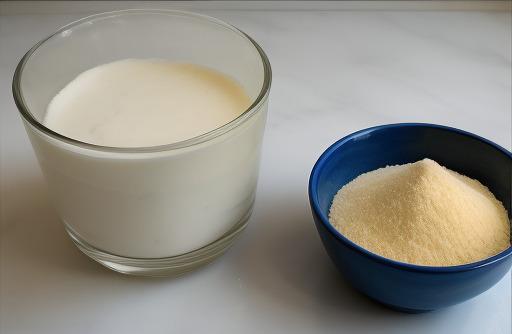Best Substitutes For Dry Milk In Baking

Dry milk is a versatile ingredient commonly used in baking recipes to enhance flavor, texture, and moisture. However, there are instances when you may run out of dry milk or need to find a substitute due to dietary restrictions or preferences. Thankfully, there are several alternatives available that can still yield excellent results in your baked goods. In this article, we will explore the best substitutes for dry milk in baking and provide tips on choosing the right substitute and cooking with it.
Key Takeaways
- Dry milk is often used in baking to enhance flavor, texture, and moisture.
- There are several substitutes available for dry milk in baking.
- The best substitutes for dry milk in baking include regular milk, non-dairy milk, yogurt, buttermilk, and sour cream.
- Different substitutes may yield slightly different results, so it’s essential to choose the right one for your recipe.
- Adjustments may be necessary when using substitutes, particularly in terms of liquid ratios and consistency.
- When substituting dry milk, consider the flavor profile and dietary restrictions of your recipe.
Why You Need A Substitute For Dry Milk In Baking
Dry milk, also known as powdered milk or milk powder, offers a convenient and long-lasting alternative to fresh milk. It is often used in baking to add richness, enhance flavor, and increase the tenderness of baked goods. However, there are several reasons why you may need a substitute for dry milk:
- Lack of availability: Dry milk may not always be readily available in your pantry or grocery store.
- Dietary restrictions: Some individuals have lactose intolerance, allergies, or follow a vegan or dairy-free diet, making dry milk unsuitable for their needs.
- Personal preferences: You may simply prefer the taste or texture of baked goods without dry milk.
Whatever the reason, it is helpful to have alternatives to dry milk in your baking arsenal. Let’s explore some of the most effective substitutes.
Types Of Substitutes For Dry Milk In Baking

When looking for a substitute for dry milk in baking, it’s important to consider the role that the dry milk plays in the recipe. Dry milk helps enhance the flavor, add moisture, and tenderize the baked goods. Below are the different types of substitutes you can use:
- Regular Milk: Regular liquid milk is the closest substitute to dry milk. It adds moisture, richness, and contributes a subtle dairy flavor to baked goods. Whole milk is the best choice for a creamier texture, but low-fat or skim milk can be used as well.
- Non-Dairy Milk: For those following a vegan or dairy-free diet, non-dairy milk such as almond milk, soy milk, or oat milk can be excellent substitutes. These milk alternatives are readily available, and many brands offer unsweetened and unflavored options.
- Yogurt: Yogurt serves as an excellent substitute for dry milk in baking. It adds moisture and richness while imparting a slight tang. Plain, unsweetened yogurt is preferable, but you can also use flavored yogurt if it complements the other flavors in your recipe.
- Buttermilk: Buttermilk provides a tangy and acidic element to baking recipes. It adds moisture and enhances the tenderness of baked goods. If you don’t have buttermilk on hand, you can create a substitute by adding one tablespoon of lemon juice or vinegar to one cup of regular milk and letting it sit for 5-10 minutes before using.
- Sour Cream: Sour cream is a rich and creamy substitute for dry milk. It contributes moisture, richness, and tang to baked goods. It works exceptionally well in recipes like cakes, muffins, and bread.
Best Substitutes For Dry Milk In Baking

Now that we understand the different types of substitutes available, let’s delve into the details of the best substitutes for dry milk in baking:
1. Regular Milk
Regular liquid milk is the most widely available and easiest substitute for dry milk. It provides moisture, richness, and a subtle dairy flavor to your baked goods. Whole milk will offer a creamier texture, while low-fat or skim milk can be used for a lighter result. When using regular milk as a substitute for dry milk, keep these adjustments in mind:
- Liquid Ratio: Use an equal amount of regular milk as the amount of dry milk called for in the recipe. For example, if the recipe requires 1/4 cup of dry milk, use 1/4 cup of regular milk instead.
- Other Adjustments: Since regular milk has a higher water content than dry milk, you may need to slightly decrease the amount of liquid in the recipe. Reduce other liquids by about 1 tablespoon per 1/4 cup of regular milk used.
Pro Tip:
To avoid a watery batter or dough, gradually add the milk to the recipe and adjust the consistency as needed. This will help you achieve the desired texture without compromising the final result.
2. Non-Dairy Milk
Non-dairy milk is an excellent option for those following a vegan or dairy-free diet. Almond milk, soy milk, and oat milk are popular choices that can be used as substitutes for dry milk. Look for unsweetened and unflavored varieties for the best results. When using non-dairy milk as a substitute for dry milk, consider the following adjustments:
- Liquid Ratio: Use the same amount of non-dairy milk as the amount of dry milk called for in the recipe.
- Flavor Profile: Non-dairy milk can have a slightly different flavor than regular milk. Be mindful of how the flavor of the non-dairy milk may interact with the other ingredients in your recipe.
3. Yogurt
Yogurt is an excellent substitute for dry milk in baking, particularly in recipes that benefit from additional moisture. Plain, unsweetened yogurt works best, but flavored yogurt can be used if the flavors complement the other ingredients in your recipe. When using yogurt as a substitute for dry milk:
- Liquid Ratio: Use an equal amount of yogurt as the amount of dry milk called for in the recipe.
- Flavor Profile: The tanginess of yogurt may add a slight tang to your baked goods, which can work well in many recipes. However, consider the overall flavor profile of your recipe and adjust as needed.
4. Buttermilk
Buttermilk adds moisture, tenderness, and a tangy flavor to baked goods, making it an excellent substitute for dry milk. If you don’t have buttermilk on hand, you can easily create a substitute by adding one tablespoon of lemon juice or vinegar to one cup of regular milk. Follow these adjustments when using buttermilk as a substitute:
- Liquid Ratio: Use an equal amount of buttermilk as the amount of dry milk called for in the recipe.
- Other Adjustments: Since buttermilk is more acidic than dry milk, you may need to slightly decrease the amount of acid (such as lemon juice or vinegar) called for in the recipe.
5. Sour Cream
Sour cream is a rich and creamy substitute for dry milk that adds moisture, richness, and tang to baked goods. It is particularly suitable for recipes like cakes, muffins, and bread. When using sour cream as a substitute for dry milk:
- Liquid Ratio: Use an equal amount of sour cream as the amount of dry milk called for in the recipe. If the sour cream is particularly thick, you might need to add a small amount of liquid (such as water or milk) to achieve the desired consistency.
- Flavor Profile: The tanginess of sour cream will add a distinct flavor to your baked goods. Ensure that the tang complements the other flavors in your recipe.
Choosing The Right Substitute For Dry Milk In Baking

When choosing the right substitute for dry milk in your baking, there are a few factors to consider:
- Flavor Profile: Consider the flavor profile of the substitute and how it will interact with the other ingredients in your recipe. For example, if your recipe has a delicate flavor, a tangy substitute like yogurt or buttermilk may not be the best choice.
- Texture and Moisture: Think about the desired texture and moisture level of your baked goods. Some substitutes, like sour cream or yogurt, will add extra moisture, while others, like regular milk or non-dairy milk, may have a lighter texture.
- Dietary Restrictions: If you or someone you are baking for has dietary restrictions or preferences, such as lactose intolerance or a vegan diet, be sure to choose a substitute that aligns with those requirements.
- Availability: Consider the availability of the substitute in your pantry or local grocery store. Opt for substitutes that are easy to find and accessible to you.
Ultimately, the right substitute for dry milk will depend on the specific recipe you are working with. Experimentation may be necessary to find the substitute that best suits your needs and preferences.
Cooking With Substitutes For Dry Milk In Baking

When using substitutes for dry milk in baking, it’s important to keep a few things in mind to ensure the best results:
- Adjust Liquid Ratios: Since different substitutes have varying liquid consistencies, you may need to adjust the liquid ratios in your recipe. Pay attention to the consistency of the batter or dough and make necessary adjustments by adding more liquid or reducing the amount of liquid as needed.
- Flavor Enhancement: Substitutes like yogurt or buttermilk can enhance the flavor of your baked goods, adding tanginess or richness. Consider the overall flavor profile of your recipe and adjust the other ingredients accordingly to balance the flavors.
- Watch for Texture Changes: Different substitutes can affect the texture of your baked goods. For example, yogurt or sour cream may make the texture more moist, while milk or non-dairy milk might result in a lighter texture. Pay attention to the desired texture of your recipe and adjust the ingredients accordingly.
- Follow Baking Time and Temperature: Even with a substitute, it’s essential to follow the baking time and temperature specified in the recipe. The substitutes should not significantly affect the baking process as long as the other ingredients and instructions are followed accurately.
Pro Tip:
When first experimenting with a substitute, it’s recommended to make a smaller batch of your recipe to test the results. This way, you can evaluate the texture, flavor, and overall outcome before committing to a larger batch.
Recipes Using Substitutes For Dry Milk In Baking

Here are two simple recipes that demonstrate the use of substitutes for dry milk in baking:
1. Classic Buttermilk Pancakes
Ingredients:
- 1 cup all-purpose flour
- 1 tablespoon granulated sugar
- 1 teaspoon baking powder
- 1/2 teaspoon baking soda
- 1/4 teaspoon salt
- 1 cup buttermilk (or 1 cup regular milk with 1 tablespoon lemon juice or vinegar)
- 1 large egg
- 2 tablespoons unsalted butter, melted
Instructions:
- In a large bowl, whisk together the flour, sugar, baking powder, baking soda, and salt.
- In a separate bowl, whisk together the buttermilk (or milk and lemon juice/vinegar), egg, and melted butter.
- Pour the wet ingredients into the dry ingredients and stir until just combined. Do not overmix; a few lumps are okay.
- Heat a non-stick skillet or griddle over medium heat. Lightly grease with butter or cooking spray.
- Pour 1/4 cup of batter onto the skillet for each pancake. Cook until bubbles form on the surface, then flip and cook until the other side is golden brown.
- Serve the pancakes warm with your favorite toppings.
2. Vegan Chocolate Cake
Ingredients:
- 1 1/2 cups all-purpose flour
- 1 cup granulated sugar
- 1/4 cup unsweetened cocoa powder
- 1 teaspoon baking soda
- 1/2 teaspoon salt
- 1 cup unsweetened almond milk (or any non-dairy milk)
- 1/3 cup vegetable oil
- 1 tablespoon vinegar
- 1 teaspoon vanilla extract
Instructions:
- Preheat the oven to 350°F (175°C). Grease and flour an 8-inch round cake pan.
- In a large bowl, whisk together the flour, sugar, cocoa powder, baking soda, and salt.
- In a separate bowl, whisk together the almond milk, vegetable oil, vinegar, and vanilla extract.
- Pour the wet ingredients into the dry ingredients and stir until just combined. Again, do not overmix.
- Transfer the batter to the prepared cake pan and smooth the top.
- Bake for approximately 25-30 minutes, or until a toothpick inserted into the center comes out clean.
- Allow the cake to cool in the pan for 10 minutes, then transfer it to a wire rack to cool completely.
- Once cooled, frost the cake with your favorite vegan frosting or ganache, if desired.
Storage And Shelf Life Of Substitutes

It’s important to note that substitutes for dry milk, such as regular milk, non-dairy milk, yogurt, buttermilk, and sour cream, have different shelf lives and storage requirements. Here are some general guidelines for storing these substitutes:
- Regular Milk: Store in the refrigerator and use within the expiration date indicated on the packaging.
- Non-Dairy Milk: Store in the refrigerator and follow the storage instructions provided by the manufacturer.
- Yogurt: Store in the refrigerator and use within the expiration date indicated on the container.
- Buttermilk: Store in the refrigerator and use within one week. Homemade buttermilk substitutes should be used immediately or within a day or two.
- Sour Cream: Store in the refrigerator and use within the expiration date indicated on the container.
Always check the label of the specific substitute you are using for any specific storage instructions or guidelines to ensure freshness and food safety.
Conclusion
Having a substitute for dry milk in your baking arsenal can come in handy when you run out or need to accommodate dietary restrictions. The best substitutes for dry milk include regular milk, non-dairy milk, yogurt, buttermilk, and sour cream. Each substitute brings its own unique flavor profile, texture, and moisture to your baked goods. With careful adjustments and considerations, you can achieve delicious results using these alternatives. So, gather your ingredients and get ready to bake up some delectable treats!
FAQS
What Can I Use As A Substitute For Dry Milk Powder In Baking?
There are several alternatives to dry milk powder that can be used in baking. Some of the best substitutes include regular milk, coconut milk powder, soymilk powder, and almond milk powder.
How Much Regular Milk Should I Use As A Replacement For Dry Milk Powder In Baking?
To substitute one cup of dry milk powder, you can use one cup of regular milk. Keep in mind that this may affect the overall texture and flavor of your baked goods.
Can I Use Coconut Milk Powder As A Substitute For Dry Milk Powder?
Yes, coconut milk powder is a great alternative to dry milk powder in baking. It adds a rich and unique flavor to your baked goods. To substitute one cup of dry milk powder, use 1/4 cup of coconut milk powder mixed with 1 cup of water.
What Is The Best Substitute For Dry Milk Powder For Vegan Baking?
For vegan baking, the best substitutes for dry milk powder are soymilk powder and almond milk powder. Both of these options add a creamy texture and nutty flavor to your baked goods.
How Does Using A Substitute For Dry Milk Powder Affect The Texture Of Baked Goods?
Using a substitute for dry milk powder may affect the texture of your baked goods. Regular milk and coconut milk powder can make your baked goods denser, while soymilk powder and almond milk powder can give them a lighter texture. Experimenting with different substitutes can help you achieve the desired results.
Sources
About the Author Jenny
I'm Jenny, a housewife with an unwavering passion for food. My culinary journey began with my grandmother's kitchen, and it's now a full-fledged food blog. I've turned my love for cooking into a creative outlet, sharing recipes and stories with a global community of fellow food enthusiasts. It's proof that being a housewife can also mean pursuing your passions and savoring life's delectable moments.
